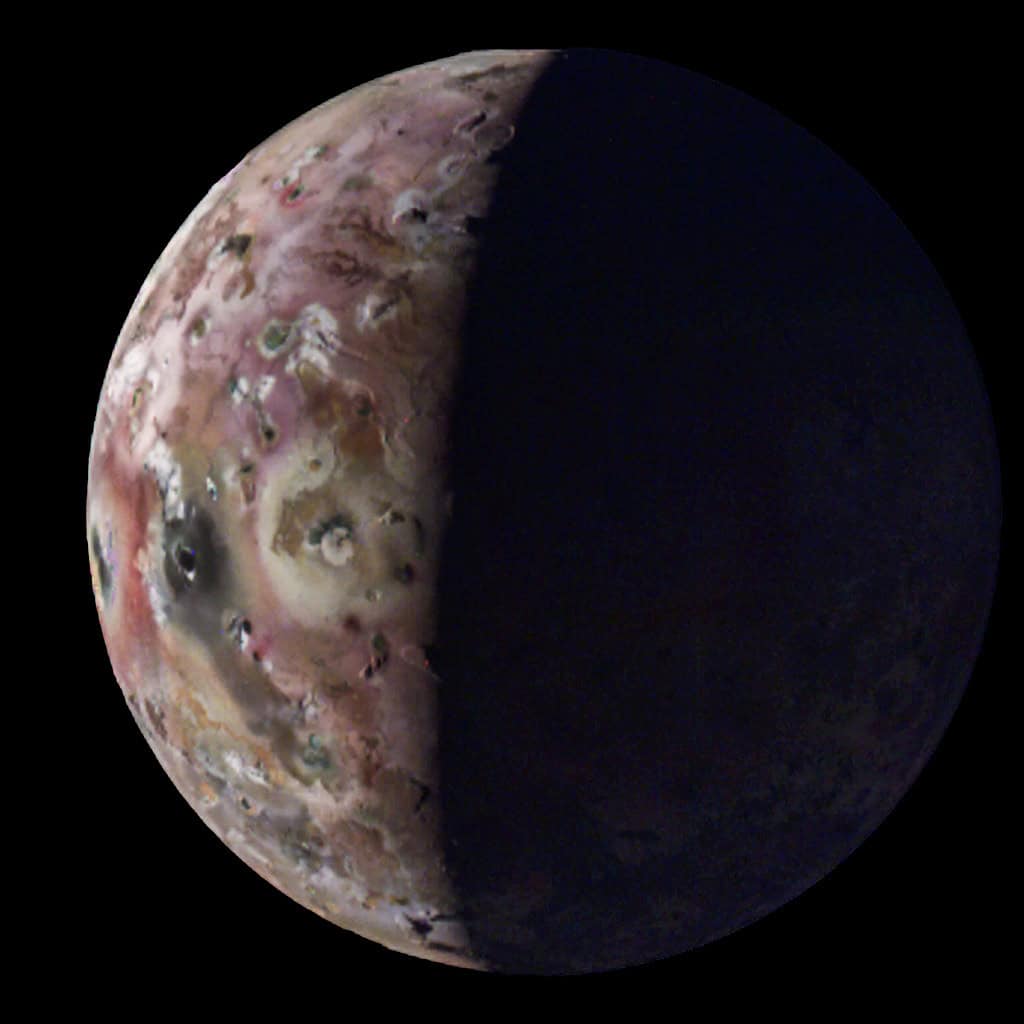
NASA has discovered a geological wonder on Jupiter’s fiery moon Io, the most volcanically active world in the solar system. Flybys by the Juno spacecraft revealed previously unknown and unusually steep mountains, as well as stunning islands in a lake lava.
Using data from Juno, researchers created vivid animations that showcase these volcanic lakes and towering mountains — a violent but eerily beautiful landscape.
“Io is simply littered with volcanoes, and we caught a few of them in action,” said Scott Bolton, Juno’s principal investigator.
“We also got some great close-ups and other data on a 200-kilometer-long (127-mile-long) lava lake called Loki Patera. There is amazing detail showing these crazy islands embedded in the middle of a potentially magma lake rimmed with hot lava. The specular reflection our instruments recorded of the lake suggests parts of Io’s surface are as smooth as glass, reminiscent of volcanically created obsidian glass on Earth.”

Navigating Jupiter’s Stormy Atmosphere
Juno has been gathering data on Jupiter, its rings, and its moons — collectively known as the Jovian system — since mid-2016 when it arrived in this distant cosmic neighborhood after a five-year journey. Since it beamed back its first data, Juno has given science one revelation after another about the inner workings of the solar system’s largest planet and its satellites.
For instance, Juno has offered unprecedented glimpses into Jupiter’s atmosphere, including the discovery of massive cyclones at both poles, and insights into the planet’s deep internal structure. Notably, Juno has also offered stunningly detailed images of Jupiter’s clouds, showcasing their intricate patterns and vibrant colors.
Every time Juno does a flyby, the spacecraft flies increasingly closer to the north pole of the gas giant. With each pass, the spacecraft’s Microwave Radiometer (MWR) instrument can study the northern polar cycles with better resolution.
“Perhaps most striking example of this disparity can be found with the central cyclone at Jupiter’s north pole,” said Steve Levin, Juno’s project scientist at NASA’s Jet Propulsion Laboratory in Southern California.
“It is clearly visible in both infrared and visible light images, but its microwave signature is nowhere near as strong as other nearby storms. This tells us that its subsurface structure must be very different from these other cyclones. The MWR team continues to collect more and better microwave data with every orbit, so we anticipate developing a more detailed 3D map of these intriguing polar storms.”
The Mystery of Jupiter’s Water

Another significant aspect of Juno’s mission is its investigation into Jupiter’s water abundance. Understanding the distribution of water, or more specifically, the distribution of hydrogen and oxygen, is crucial for piecing together the narrative of our solar system’s origins.
Jupiter was probably the first planet to form in the solar system from all the gas and dust that wasn’t incorporated by the Sun. Recent measurements indicate that the water content near Jupiter’s equator is several times higher than initial estimates, challenging earlier models based on data from the 1995 Galileo probe.
The findings reinforce the idea that water-ice materials might have contributed to the enrichment of Jupiter with heavy elements (chemical elements heavier than hydrogen and helium) during its formation or evolution. However, Juno’s observations are both enlightening and puzzling at the same time. The spacecraft’s data also points to an unexpectedly low water content in Jupiter’s core, and as such the gas giant’s formation still eludes scientists.
As Juno’s mission continues, further data could clarify the differences in water abundance between Jupiter’s polar and equatorial regions and provide deeper insight into the planet’s enigmatic, diffuse core.
Juno’s next significant flyby is scheduled for May 12, and the scientific community watches eagerly. Each pass not only brings an enhanced understanding of Jupiter’s atmospheric dynamics and composition but also draws us closer to answering fundamental questions about the formation of our solar system.


